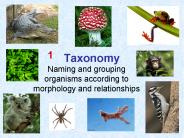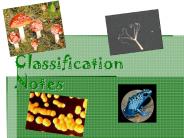Domesticus PowerPoint PPT Presentations
All Time
Recommended
Anatomy of a Cat. legs. claws. ears. stature: 9' Making Reputation Match Stature. stature: 9' ... Deepak Verma. The following people sucked up to our cat for ...
| PowerPoint PPT presentation | free to download
AGENDA Hypothetico-deductive methodology Cricket as a representative insect Dominance ... system Mating No ... Dominance Behavior of the cricket ...
| PowerPoint PPT presentation | free to download
most ravishing cat. Interactive Digression: The Statistical Spot Check. Real NMI. Other cats. Alex stuck in cat door. Historically, cats were 'f's. Anatomy of a Cat ...
| PowerPoint PPT presentation | free to download
Serotonin Lowers. Auditory Thresholds in the Cricket Acheta domesticus ... Serotonin titers are correlated to circadian rhythms in crickets. Experimental Design ...
| PowerPoint PPT presentation | free to view
Cats do not show their claws in their tracks because they are retractable. The two front toes in a cat track are not aligned right ... (Didelphis marsupialis) ...
| PowerPoint PPT presentation | free to view
alergenos y alergia dermatophagoides pt lepidoglyphus tyrophagus glyciphagus domesticus acaro siro blomia chrotoglypus euroglyphus alternaria aspergillus penicilium ...
| PowerPoint PPT presentation | free to download
Domesticated Pekin Duck. Anas Domesticus. Biology Summer Project. by Lynn-Ellin Zeigler. Anas Domesticus or Domesticated Pekin Duck. Date Observed: August 2 ...
| PowerPoint PPT presentation | free to view
?????????????????????????. ??????????????????????????????????????? ... Boa constrictor(Constrictor constrictor) 14. Cricket (Gryllus domesticus) 22 ...
| PowerPoint PPT presentation | free to view
Kadaknath is a black meat chicken breed found in India. They are also known as “Kala Masi” Native of Kedarnath is Dhar and Jhabua districts of Madhya Pradesh. Kadaknath is derived from two words whereas Kadak means “hard” and Nath means “lord”. The scientific name of Kedarnath is Gallus gallus domesticus. Kadaknath is completely different from other species of chicken.
| PowerPoint PPT presentation | free to download
A H ZITY K A h zity k (Gallus gallus domesticus) a bankivaty k h zias tott v ltozata, amely a f c nf l k (Phasianidae) csal dj ba tartozik.
| PowerPoint PPT presentation | free to view
the branch of biology that names and groups organisms according to their ... Some examples of scientific names: Canis familiaris - dog. Felis domesticus - cat ...
| PowerPoint PPT presentation | free to view
1. The Developing Brain, Brown, Keynes, Lumsden, 2001, Oxford University Press. ... 9. Gallus domesticus, embryo manipulation, chick-quail chimera ...
| PowerPoint PPT presentation | free to view
... activity, such as earthquakes, volcanoes and mountain building ... Felis domesticus: house cat. Pongo pygmaeus: orangutan. Gorilla gorilla: lowland gorilla ...
| PowerPoint PPT presentation | free to view
Kadaknath is a black meat chicken breed found in India. They are also known as “Kala Masi” Native of Kedarnath is Dhar and Jhabua districts of Madhya Pradesh. Kadaknath is derived from two words whereas Kadak means “hard” and Nath means “lord”. The scientific name of Kedarnath is Gallus gallus domesticus. Kadaknath is completely different from other species of chicken.
| PowerPoint PPT presentation | free to download
American wild rice (Zizania aquatica) American rice Zizania aquatica. China. 4,000 ... European wild boar (Sus scrofa) Pig (Sus domesticus) Egypt. 7,000 ...
| PowerPoint PPT presentation | free to view
1700s Carolus Linnaeus founded taxonomy (similar to what we use today) ... Family Felidae. Genus Felis. Species Felis domesticus. Scientific Names ...
| PowerPoint PPT presentation | free to view
Weaving the Web Vision of. Tim Berners-Lee ... Family Felidae. Genus Felis. Species Felis domesticus. 31. Ontologies Formal Class Model ...
| PowerPoint PPT presentation | free to view
Where do humans fit into the big picture? How do we study science? ... Family Hominidae Felidae. Genus Homo Felis. Species sapiens domesticus ...
| PowerPoint PPT presentation | free to view
time of day on cricket chirps. House Cricket (Acheta domesticus) ... Cricket chirps increase with respect to all three variables. ...
| PowerPoint PPT presentation | free to view
Most multi-cellular, Make their own food or feed on living or dead-living things ... Scientific name for a house cat is Felis domesticus. Scientific name for ...
| PowerPoint PPT presentation | free to view
The association between pests and the spread of human and animal diseases has been established for many years.
| PowerPoint PPT presentation | free to download
Classification I. Carl Linnaeus Classification System 1. Taxonomy the science of naming organisms and assigning them to groups a. Similar structural ...
| PowerPoint PPT presentation | free to view
Classification Systems Classification systems name and order organisms in a logical manner so that their relationships are evident. Taxonomy the field of biology ...
| PowerPoint PPT presentation | free to view
Life, as we call it.
| PowerPoint PPT presentation | free to download
DISCREPANCY IN NUCLEAR, MITOCHONDRIAL AND KARYOLOGICAL CHARACTERISTICS OF MUS MUSCULUS SUBSPECIES IN PRIMORYE HYBRID ZONE Spiridonova L.N. Institute of Biology and ...
| PowerPoint PPT presentation | free to download
Intro to Life and Animals
| PowerPoint PPT presentation | free to download
Classification of Organisms Classification of Organisms Taxonomy: branch of science dealing with the classification of organisms Purpose of classification ...
| PowerPoint PPT presentation | free to view
Chapter 6 Multi-cellular Organisms Lesson 1 How are living things grouped? Vocabulary Preview Classification: process of grouping similar things together Kingdom: a ...
| PowerPoint PPT presentation | free to download
Chapter 18 Classification The diversity of life Why is it necessary to classify? 1.5 million species on the planet so all creatures must be organized with a universal ...
| PowerPoint PPT presentation | free to download
PerlXML::DOM reading and writing XML from Perl
| PowerPoint PPT presentation | free to view
Taxonomy Classification Name three things that you classify at home. Clothes 2) Music Collections / hobbies Classification is the grouping of objects or information ...
| PowerPoint PPT presentation | free to view
Is your closet organized? Living things are organized into 6 groups THE 6 KINGDOMS OF LIVING THINGS ARE: Archaebacteria Eubacteria Protista Fungi Plants Animals Why ...
| PowerPoint PPT presentation | free to download
Introduction to Classification What is taxonomy? The branch of biology that groups organisms based on common characteristics. I. Introduction Why do scientists ...
| PowerPoint PPT presentation | free to view
... PowerPoint Presentation The study of the interaction of living organisms with eachother and with their physical environment ECOLOGY The physical location in ...
| PowerPoint PPT presentation | free to download
axonomy T Science dealing with the classification of organisms Biologists use classification to organize living things into groups so that the organisms are easier to ...
| PowerPoint PPT presentation | free to view
Sheep-Ovis aries. Ram Adult male sheep. Ewe Adult Female sheep. Lamb Young sheep, either sex ... A female bee that lays the eggs. Horse-Equus caballus. Foal ...
| PowerPoint PPT presentation | free to view
Taxonomy Techniques of the past and present to provide information about an organism. Part One How it all started. Plants were grouped according to their stem ...
| PowerPoint PPT presentation | free to download
Classification Chapter 18
| PowerPoint PPT presentation | free to view
Back A pneumonic device for the 8 levels of ... The scientist that developed the two-part naming system for organizing living ... this part of speech.
| PowerPoint PPT presentation | free to view
Check Your Answer Digestive System for 3 Answer: ... This way you can save the blank copy to use again. ... the first team to
| PowerPoint PPT presentation | free to view
Taxonomy Techniques of the past and present to provide information about an organism. *
| PowerPoint PPT presentation | free to download
Title: Bild 1 Author: Svetts ck Last modified by: albin Created Date: 3/27/2006 1:48:34 PM Document presentation format: On-screen Show Other titles
| PowerPoint PPT presentation | free to download
classifying organisms ls ch 7 sec 4 goal/purpose students will be able to explain why biologists classify animals. relate the levels of classification between ...
| PowerPoint PPT presentation | free to download
Classification Chapter 18
| PowerPoint PPT presentation | free to view
Classification Pink- headings Blue Vocabulary Purple Important Stuff
| PowerPoint PPT presentation | free to view
Ch. 18, Classification 18-1: Finding Order in Diversity How living things are organized Binominal Nomenclature Linnaeus s System of Classification
| PowerPoint PPT presentation | free to view
Puma concolor Chapter 2 Classification 1 Classification means organizing living things into groups based on their similarities. 2 Scientists classify living and ...
| PowerPoint PPT presentation | free to view
Classification Sorting it all out Why Classify? Classification is putting things into orderly groups based on similar characteristics. Allows us to figure how many ...
| PowerPoint PPT presentation | free to download
Classification Preview Section 1 Sorting It All Out Section 2 Domains and Kingdoms Concept Mapping What is the mental image you get when the word gopher is said?
| PowerPoint PPT presentation | free to view
Classification Sorting it all out
| PowerPoint PPT presentation | free to download
... Carolus Linnaeus Classification Taxa of Domestic Dog -an example- Classification Hierarchy Binomial Nomenclature Other scientific names: Why scientific names?
| PowerPoint PPT presentation | free to download
Classification Notes Why do we classify? Classification puts organisms into groups by looking at characteristics (traits) they share. Taxonomy Classifying living ...
| PowerPoint PPT presentation | free to download
(back) Title image: School of Ecology and Conservation, ... PowerPoint Presentation Author: Michelle Smith Last modified by: Michelle Smith Created Date:
| PowerPoint PPT presentation | free to view
Chapter 2 Notes Classification means organizing living things into groups based on their similarities. Scientists classify living and extinct organisms to make them ...
| PowerPoint PPT presentation | free to view
Classification Grouping things based on their characteristics!! Section 17.1 Summary pages 443-449 Section 17.1 Summary pages 443-449 Section 17.1 Summary ...
| PowerPoint PPT presentation | free to download
Title: Diapositiva 1 Author: SGTI Last modified by: Propietario Created Date: 5/3/2004 9:32:26 AM Document presentation format: Presentaci n en pantalla
| PowerPoint PPT presentation | free to download
























































